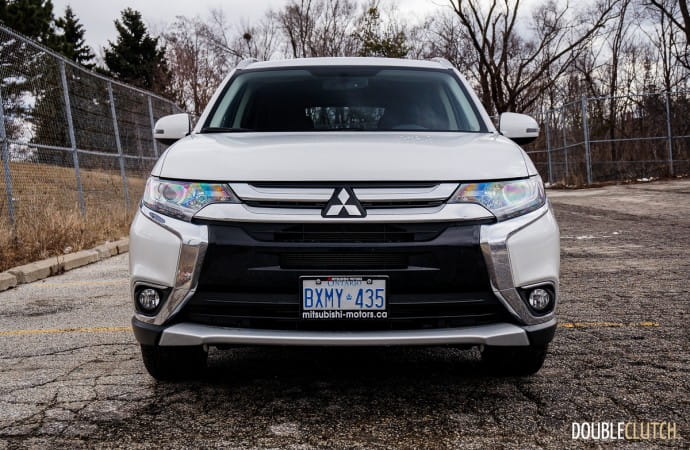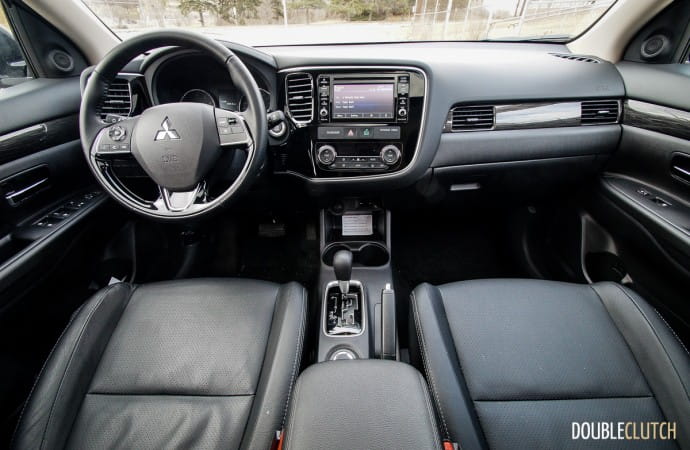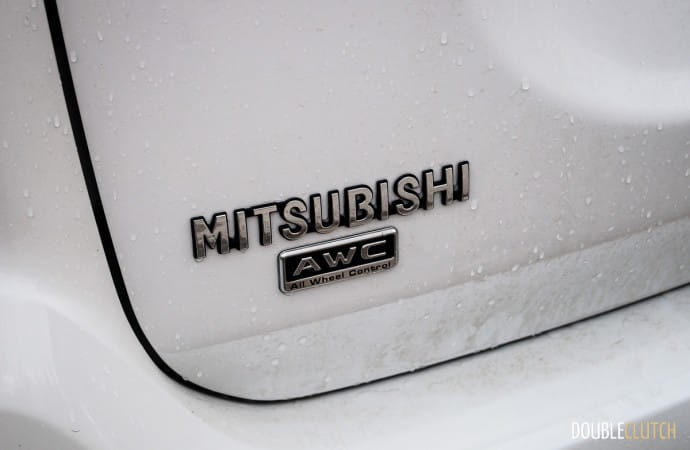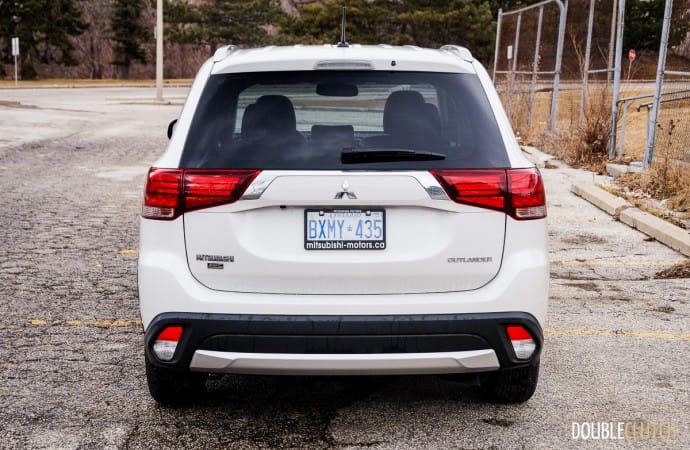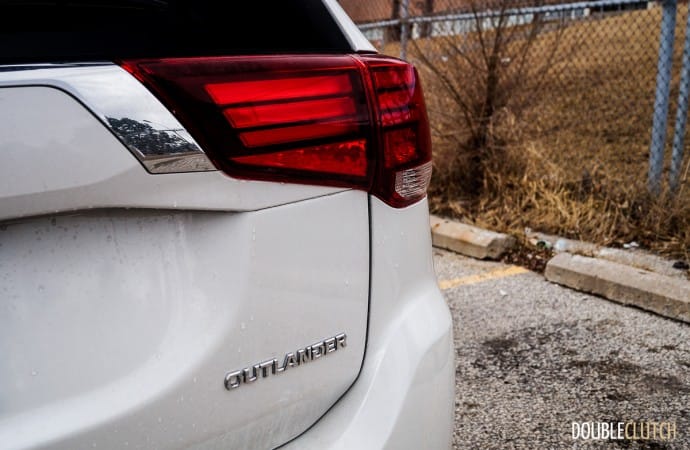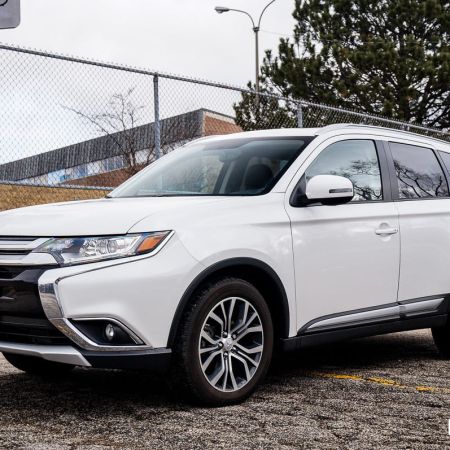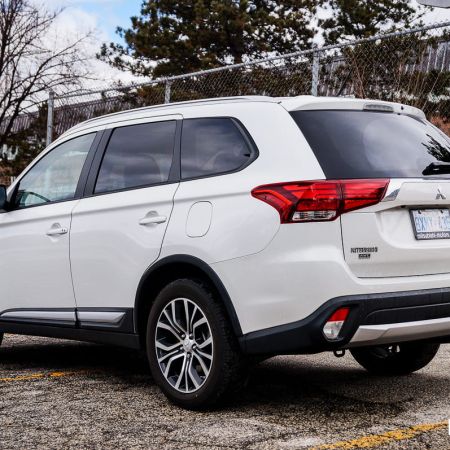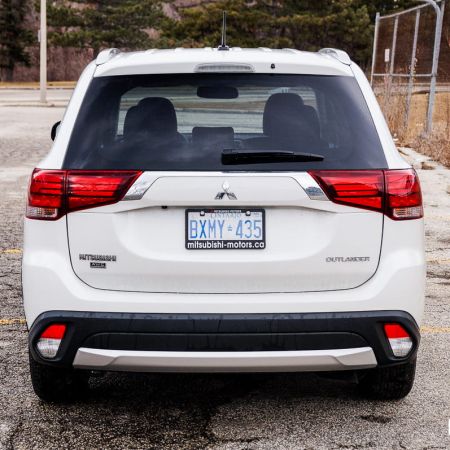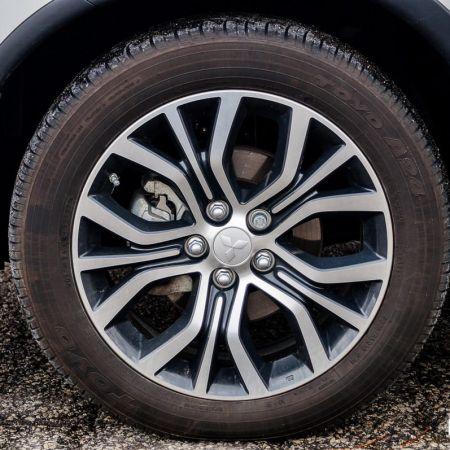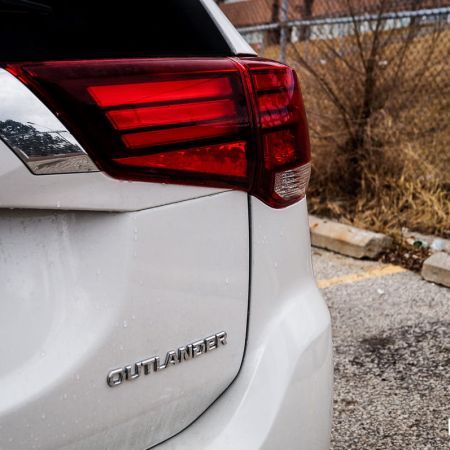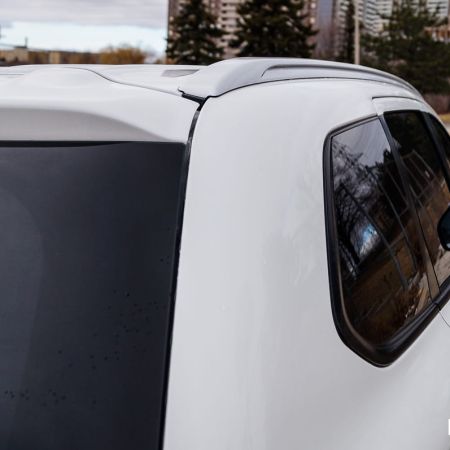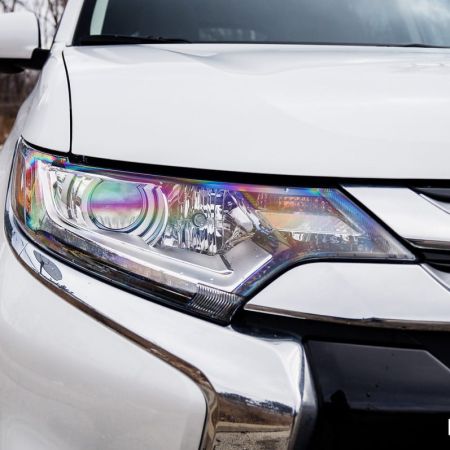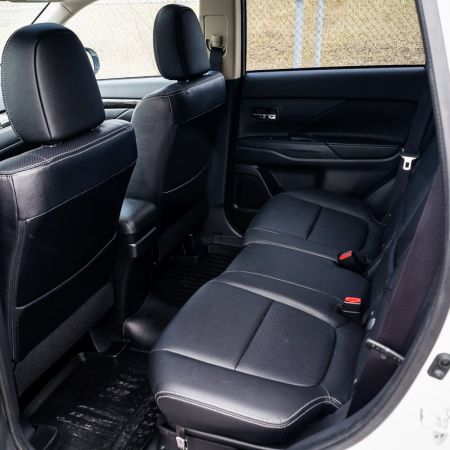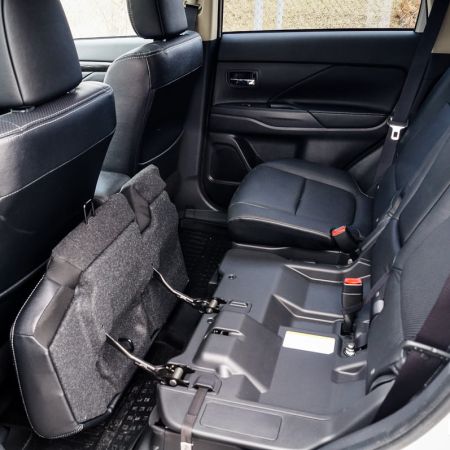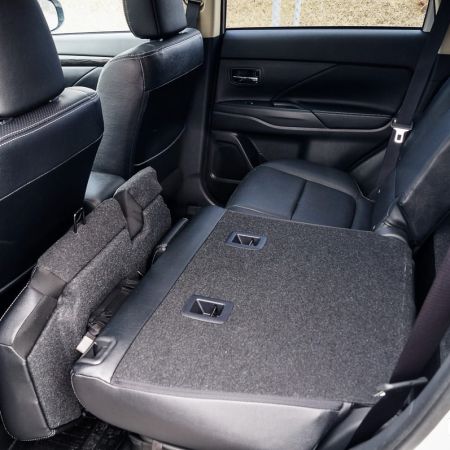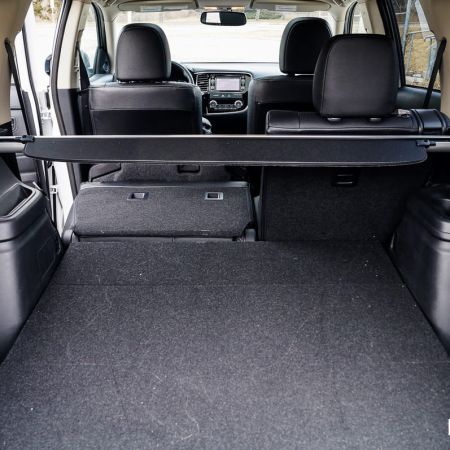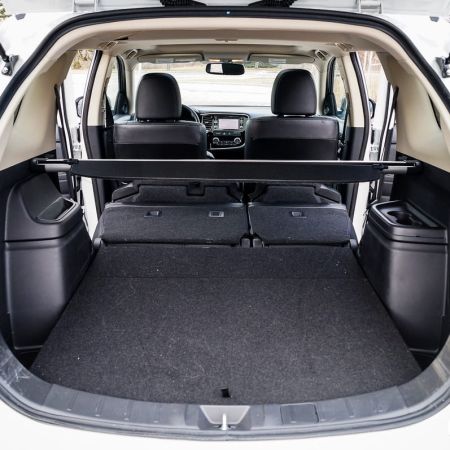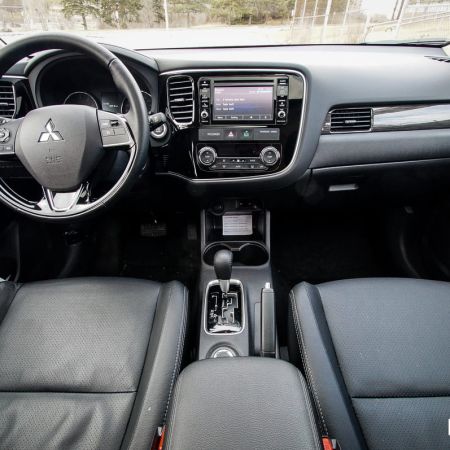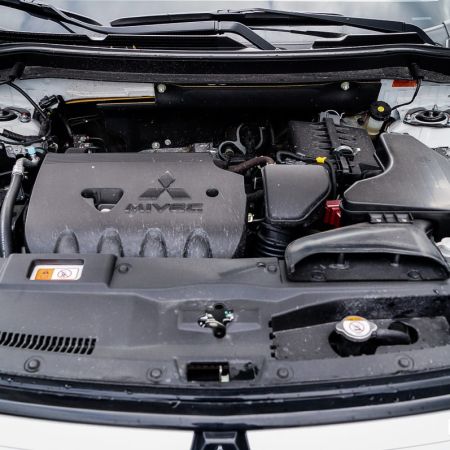As their newest offering in the high volume midsize CUV segment, Mitsubishi has a lot riding on the success of the Outlander. When the current generation was first released in 2014, I had the opportunity to review it and I came away slightly underwhelmed. Though a practical, affordable and efficient option, the pre-facelift Outlander felt drab and unmemorable. To their credit, Mitsubishi has clearly been paying attention to what critics have said and for 2016 put together a refresh, addressing many of the previous version’s weak points. TV commercials call out the over 100 improvements made, so I was happy to get a chance to spend a week with a 2016 Mitsubishi Outlander ES AWC and see if Mitsubishi’s efforts had been worthwhile.
The most obvious changes are apparent just looking at the new Outlander. Gone is the awkward looking front fascia of the previous version, in favor of a much more sculpted and aggressive look, incorporating Mitsubishi’s new “dynamic shield” grill. The side body cladding has also been pumped up with a beefy looking rubber and chrome strip across the bottom of the doors. It doesn’t sound like much, but the extra cladding breaks up the “slab sided” look that the previous version suffered from and nicely compliments the aggressive personality of the Outlander.
Around back, the chrome and clear tailings have been replaced with more traditional red LED lamps, and again a new more rugged looking rear bumper has been fitted. All of these changes go a long way to giving the CUV a much more macho look that fits in a lot better on our streets. The previous version stood out to me for looking so plain yet different, whereas the new version looks right at home alongside its competition.
Rather than having us test a fully loaded version, Mitsubishi sent a mid-range ES trim Outlander with the All-Wheel-Control 4WD system and a $4000 Premium Package. The package would represent a near loaded model, but with the base 2.4L four-cylinder instead of the 3.0L V6. It comes with a few nice features such as LED daytime running lamps, automatic climate control and heated front seats. Adding that Premium Package gives you just about everything that a typical CUV buyer might be looking for; leather seats, sunroof, sporty 18” alloy rims, dual zone climate control, satellite radio, 6.1” touchscreen infotainment system, and rear view camera. With the package, my tester came to $31,998.
The interior in the Outlander has also undergone a number of improvements. It’s significantly quieter than the Hyundai Santa Fe Sport (see review here), and the attention to NvH alone adds a lot to the overall feeling of quality. The materials also seem slightly improved, although still on the cheap end of the scale. The black leather seats are firm but comfortable and I quickly found a relaxed driving position and good visibility. The dashboard controls are slightly tilted toward the driver, which I like, and are pretty well laid out for ease of use.
Mitsubishi’s 6.1” touchscreen infotainment system is fairly basic, but easy to use and doesn’t lag at all. The gauge cluster has also been dramatically improved over the throwback to 1999 found in the previous version. I still couldn’t get it to display an average fuel economy number for the total trip distance; rather it would reset every time I parked the vehicle for a few hours. Passenger room is fantastic up front and in the rear, and since my Outlander didn’t come with the optional third row seating, the cargo area was quite large.
I did notice a few areas inside the Outlander that could use some continued improvement though. Firstly, the materials used are still subpar compared to most CUVs in the segment. Beyond that, the centre console dedicates a lot of space to the “4WD” button used to toggle between the different modes. It looks interesting, but I’d rather have some extra storage space. Also, despite the vastness of the rear cargo area, the shock towers intrude on a lot of usable room. Still, the Outlander had no problem swallowing a 60” TV. All in all, Mitsubishi has made a lot of progress inside the Outlander, but there’s still some work to be done.
The base 2.4L four-cylinder in my tester came mated to the only transmission available, a CVT. I am generally not a fan of the 4-cylinder CVT combination, but it does work quite well here in the Outlander. The 2.4L produces 166 horsepower and 162 lb-ft of torque. Not a whole lot to talk about, but power delivery is smooth, linear and predictable, making the Outlander feel more powerful that it really is. In the city throttle response is sharp, also adding to the illusion of power.
It’s only when you put your foot down to merge or pass that you notice the Outlander’s sluggish nature. In exchange I averaged an impressive 8.8L/100kms on my daily rush hour commute. That’s one of the better averages I’ve managed to get from an AWD CUV of this size and definitely offsets the weak acceleration for me. Mitsubishi’s All-Wheel-Control system might also play a role in the good fuel economy numbers I saw; the system has 3 modes, “Eco”, “Auto”, and “Lock”.
Keeping the system in “Eco” maximizes efficiency by minimizing the engagement of the rear differential and wheels. “Auto” actively transfers power to where it’s needed to maximize traction, and “Lock” will split power between all 4 wheels for off-road situations. I kept the Outlander in “Eco” for most of my test period, with the exception of one morning where a fresh layer of snow had fallen. That morning I kept the system in Auto and it worked well, noticeably transferring power to where I needed it to maintain grip despite not being equipped with winter tires.
From behind the wheel, the new Outlander is a fairly competent and comfortable CUV. While not as refined as some of its competitors, the ride is confident and it’s noticeably smoother than the previous model. Wind, road and engine noise are all very well reduced inside the cabin as well. Even after a week though, I couldn’t quite get used to the electric assist steering. It’s well weighted, but has a strange sense of being disconnected from the road that I just couldn’t warm up to. The Outlander is not the type of vehicle I’d want to spend time with on a fun twisty road, but body roll is minimal and I found it able to competently handle the city’s on/off ramps without any drama.
Mitsubishi’s efforts have not been in vain, and with the 2016 Mitsubishi Outlander ES AWC, they now have a competent midsize crossover. The strong points remain the same as before –affordability, fuel economy, and Mitsubishi’s 10-year/160,000km powertrain warranty. The biggest difference is that many of the glaring shortfalls of the previous model have been addressed. At the as-tested price of $31,998 I can see value here for a budget minded family looking for a practical family hauler, but it’s worth noting that similar money will buy a nicely equipped Kia Sorento (see review here) or Hyundai Santa Fe Sport. Shopping around pays dividends in this segment.
2016 Mitsubishi Outlander ES AWC Gallery
See Also:
Road Trip: 2016 Kia Sorento SX Turbo

